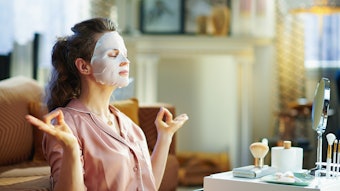
Most of us have heard some version of the expression, “Aging is a state of mind.” My favorite is from Mark Twain: “Age is an issue of mind over matter. If you don’t mind, it doesn’t matter.”
Joking aside, science has identified connections between the cognitive mind and aging. Galkin, et al., reported that psychological factors such as stress, loneliness, mental health and negative perceptions of aging can significantly influence biological aging. These authors also demonstrated that mental and physical health are interlinked – and that low psychological well-being can be as detrimental as serious diseases and smoking.1
In other work, Adluru, et al., used machine learning to examine the brain aging rate of a Tibetan Buddhist monk who had spent “numerous hours” of his life meditating. His brain-aging rate appeared slower than the controls; at 41 years, his brain resembled that of a 33-year-old.2
In relation, psychodermatology has emerged as an area of interest to our industry, as connections are made between state of mind and skin conditions.3 Taken together, these mind-body concepts return us to one fundamental understanding about beauty: perception is everything. And this extends beyond a consumer’s perception of product efficacy or sensory experience; it reaches into the mind’s eye of the beholder.
Our latest issue explores several aspects of the mind-body connection and aging. Fink, et al., on Page 38, presents self- and third-party ratings of female facial appearance for age, health and attractiveness across five ethnic groups – and the impact of beliefs about the roles of given skin features. Jinhui, on Page 8, describes how anti-aging has moved into the realm of psychology, connections to neurocosmetics and the potential for AI in this space.
Nestrud and Dito, on Page 32, delve into consumers’ emotional desires and consider how to build products that appeal to the senses to fulfill them. Mokhtari, Nafisi and Maibach explore the potential of plant stem cells for physical anti-aging and skin rejuvenation benefits on Page 28.
This edition additionally looks at solutions for hair and scalp health. On Page 42, Marsh demonstrates how multiple types of hair damage act synergistically and explains how to mitigate them. And our Expert Opinions piece on Page 16 provides industry insights about current and future directions in scalp/hair care.
We hope this issue inspires you from your mind’s eye to your formulation lab and beyond.
References
1. http://tinyurl.com/yeyky6ed
2. https://doi.org/10.1080/13554794.2020.1731553
3. https://brieflands.com/articles/jssc-137387










